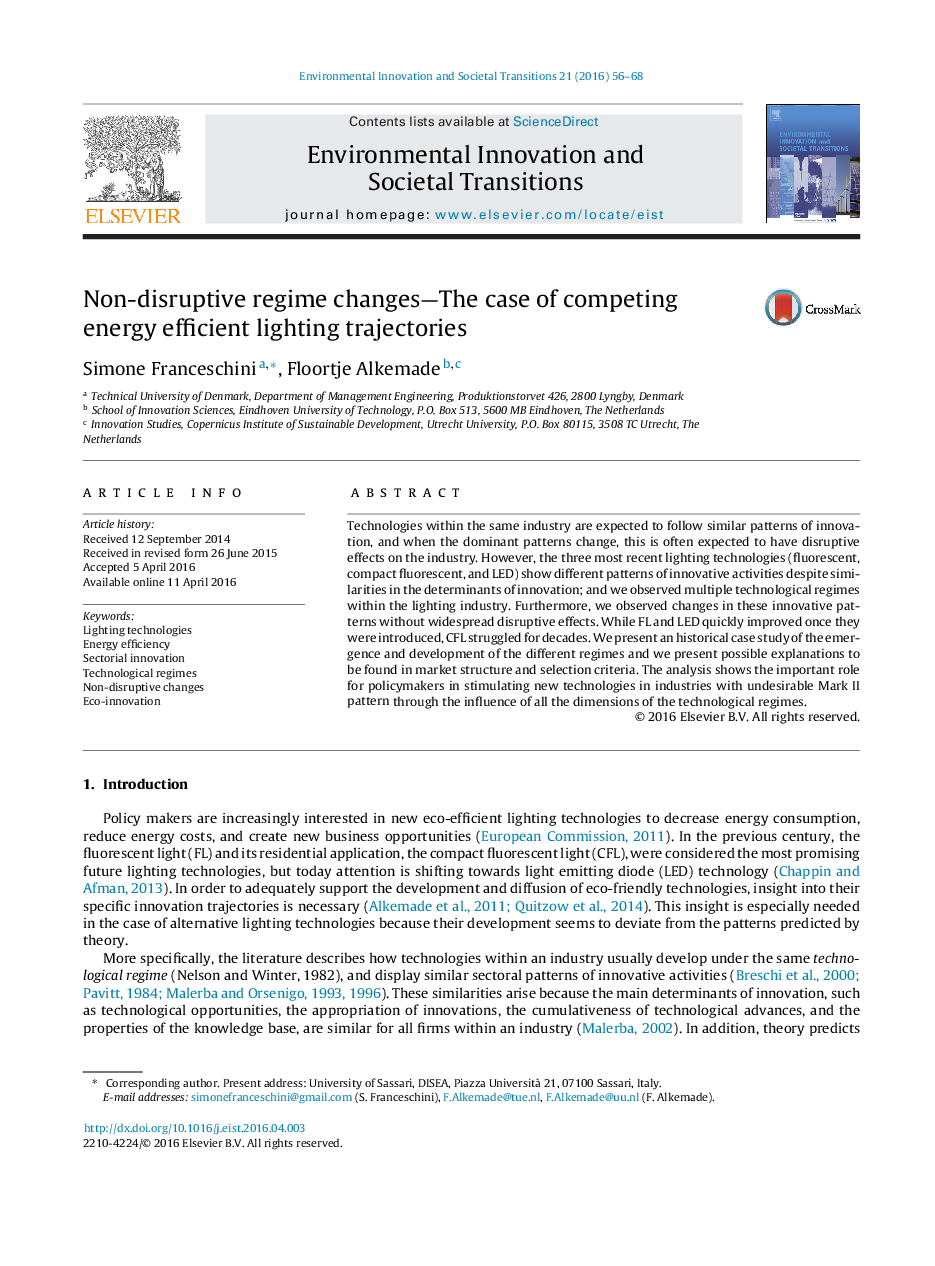| Article ID | Journal | Published Year | Pages | File Type |
|---|---|---|---|---|
| 6464228 | Environmental Innovation and Societal Transitions | 2016 | 13 Pages |
â¢Technologies within the same industry are expected to follow similar sectorial patterns of innovation,.â¢But we observe very different patterns for fluorescent lighting, compact fluorescent lighting (CFL), and LED.â¢Fluorescent light diffused quickly, CFL struggled for decades and LED developed in complementary markets.â¢The lighting industry changed from an oligopolistic regime to a more competitive regime without major disruptive changes.â¢LED illustrates a non-disruptive major technological change towards sustainability that can be pursued by policy makers.
Technologies within the same industry are expected to follow similar patterns of innovation, and when the dominant patterns change, this is often expected to have disruptive effects on the industry. However, the three most recent lighting technologies (fluorescent, compact fluorescent, and LED) show different patterns of innovative activities despite similarities in the determinants of innovation; and we observed multiple technological regimes within the lighting industry. Furthermore, we observed changes in these innovative patterns without widespread disruptive effects. While FL and LED quickly improved once they were introduced, CFL struggled for decades. We present an historical case study of the emergence and development of the different regimes and we present possible explanations to be found in market structure and selection criteria. The analysis shows the important role for policymakers in stimulating new technologies in industries with undesirable Mark II pattern through the influence of all the dimensions of the technological regimes.
